#apis vespa
Explore tagged Tumblr posts
Text
La costellazione dell'Ape, conosciuta anche come Mosca Boreale, è una costellazione obsoleta con una storia interessante.
0 notes
Text
Yellow-Legged Hornet, Killer of Honeybees, Found in Georgia
The Georgia Department of Agriculture announced earlier this week that a beekeeper in Savannah found an unusual insect later identified by University of Georgia officials as a yellow-legged hornet. What Did the Actors Bring to Their Back to the Future: The Musical Performances? Yellow-legged hornets (Vespa velutina) are an invasive species that decimate honeybee colonies, which are…

View On WordPress
#Apis cerana japonica#Asian giant hornet#Asian hornet#Bee#Environment#European hornet#Gizmodo#Honey bee#Hornet#Tyler Harper#u.s. department of agriculture#Vespa soror#Vespidae
0 notes
Text
Come distinguere alcuni impollinatori.
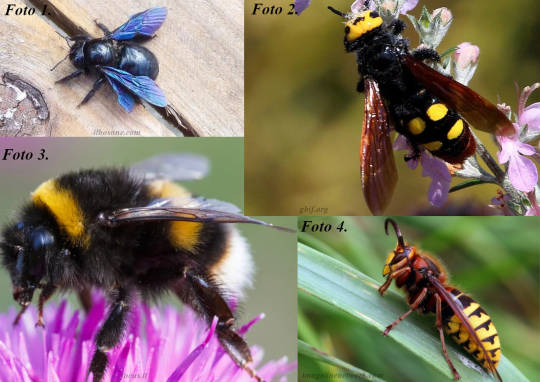
Ormai è giunta l'estate. Il sole ed il caldo, grazie anche alle belle giornate, causano il risveglio degli insetti, in particolar modo degli impollinatori. Sempre più spesso mi capita di imbattermi in video e notizie che fanno della disinformazione la propria bandiera e siccome non è raro trovare persone che con la giustificazione del terrore suscitato da questi insetti ne provocano un vero e proprio sterminio l'ultima cosa di cui si ha bisogno è di disinformazione.
Quando si parla di "calabrone" le testate giornalistiche danno sfogo ai più ignoranti e bassi istinti. Oltre a fare terrorismo tendono a racchiudere in quel nome volgare una lunga serie di insetti che spesso non hanno nulla a che fare gli uni con gli altri: Vespa velutina, Vespa orientalis, Xylocopa violacea, Megascolia maculata flavifrons, Bombus terrestris, Vespa mandarinia e via di questo passo. Il primo consiglio che vi do è quello di diffidare sempre e comunque delle notizie che sfoggiano titoli allarmistici come "Calabrone killer", "Calabrone gigante assassino", "Calabrone sterminatore di api" e soprattutto che fanno ricorso ai nomi volgari. L'unico modo valido per non fare confusione è quello di fare uso del nome scientifico delle specie.
Per farla breve (e già breve non è più) m'è balenata l'idea di provare ad insegnarvi a distinguere Vespa crabro dagli insetti che più comunemente, ed erroneamente aggiungerei, vengono designati con il nome volgare di "calabrone".
- Xylocopa violacea: dal greco xýlon («legno») e kóptō («[io] taglio»)
(Foto 1).
Trattasi di grosse api solitarie, di colore bluastro/violaceo. La femmina ha l'abitudine di scavare delle gallerie nel legno, in genere marcio, allo scopo di deporre le uova. Questo colore scuro (e molto bello a mio modesto parere) permette loro di cominciare l'attività prima degli altri impollinatori poiché ha una capacità riflettente più bassa rispetto ai colori chiari e di conseguenza assorbe meglio il calore. Hanno un volo rumoroso, possono incutere timore alla vista, ma non avendo una colonia da difendere è veramente difficile che facciano ricorso alla puntura.
- Megascolia maculata flavifrons.
(Foto 2).
Le femmine di Megascolia maculata sono facilmente riconoscibili dalle grosse dimensioni e dalla fronte gialla (dal latino flavifrons). Si tratta di insetti miti e solitari che si nutrono di nettare. Trattasi del più grande imenottero europeo, è un ottimo impollinatore e non crea colonie. L'individuo adulto caccia le larve di Oryctes nasicornis, un coleottero scarabeide, in cui depone le uova da cui nasceranno le larve che se ne nutriranno. Sono facilmente riconoscibili grazie alle bande gialle sull'addome: Megascolia presenta quattro macchie gialle a guisa di quadrifoglio; Scolia hirta in genere presenta due strisce gialle parallele; Scolia hirta unifasciata una sola banda gialla. Sebbene il maschio di Megascolia maculata somigli molto alla femmina di Scolia hirta è sufficiente far caso a piccoli dettagli per venire a capo della specie di appartenenza: Scolia hirta ha sempre e comunque ali bluastre, Megascolia maculata presenta ali ambrate. Nel caso del maschio la lunghezza delle antenne è ulteriore indicazione.
- Bombus terrestris.
(Foto 3).
La femmina feconda di Bombus terrestris depone le uova in buche sotterranee, da qui il nome terrestris, spesso ricavate da tane abbandonate da altri animali, in particolare roditori, essendo il bombo poco abile nell'atto di scavare. Dà vita a piccole colonie.
- Vespa crabro (maschio).
(Foto 4).
Finalmente eccoci giunti al vero "calabrone", Vespa crabro. Attorno a Vespa crabro si è fatta tanta di quella pubblicità negativa al pari di quanta per Apis mellifera se ne sia fatta in positivo. Intendiamoci, sono entrambi insetti fondamentali, ma si è sovente esagerato sia in un senso che nell'altro. Vespa crabro è un buon insetto impollinatore, un ottimo sterminatore di parassiti della frutta ed è meno aggressivo di quanto la stampa voglia far credere. Lo avrete sicuramente sentito descrivere come uno sterminatore di api e come un assassino di incauti, ma le cose non stanno esattamente così. Una colonia di api sana non teme certo quegli sporadici attacchi di Vespa crabro, e rispettando le buone norme del buon senso e della prudenza non è più pericoloso per gli esseri umani di quanto non lo sia un qualsiasi altro insetto aculeato (salvo allergie). Il vero pericolo per Apis mellifera è Vespa velutina in quanto è specie aliena. Gli apicoltori che hanno deciso di dichiarare guerra a Vespa crabro, oltre a fare un grosso danno all'ecosistema, si tirano la zappa sui piedi. Pare infatti che Vespa crabro preferisca cacciare Vespa velutina in volo stazionario attorno alle arnie, prede ben più facili da catturare rispetto alle agili api. Bisogna sempre riflettere sulle azioni che si vuol intraprendere.
Come si distingue una Vespa crabro maschio da un'esemplare femmina? Dalla lunghezza delle antenne (più lunghe ed arricciate nei maschi) e dal numero dei segmenti addominali (sette nei maschi, sei nelle femmine). Come per la quasi totalità degli insetti aculeati il maschio non ha pungiglione, quindi è totalmente inoffensivo.
Torno a precisare, come già fatto in passato, che se si vuole davvero fare qualcosa per l'ambiente e per la biodiversità è d'uopo tutelare qualsiasi specie di insetti, anche quelli che a pelle non appaiono rassicuranti. Non abbiate paura di questi animali, anzi imparate a conoscerli, a riconoscerli e a rispettarli. Una volta fatto ciò non solo avrete meno timore, ma saprete come comportarvi in caso di incontro ravvicinato.
0 notes
Text
Uncharismatic Fact of the Day
Asian giant hornets are well known for preying on honeybees, and as the largest hornet species in the world they may seem indominatble. However, Japanese honey bees have developed a tried and true technique for defending their homes: when they sense a hornet coming, about a hundred workers form a shallow tunnel around the hive's entrance, enticing the hornet in. Once the hornet enters the workers surround her and vibrate their bodies. This raises the interior of their ball to 46 °C (115 °F) and releases carbon dioxide, both cooking and suffocating the hornet.
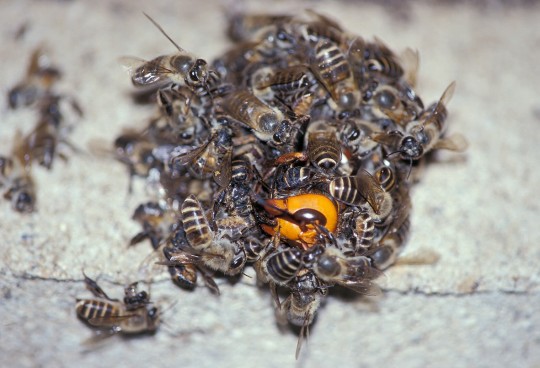
(Image: A group of Japanese honey bees (Apis cerana japonica) surrounding an Asian giant hornet (Vespa mandarinia) by Masato Ono)
#japanese honey bee#Hymenoptera#Apidae#honey bees#bees#asian giant hornet#Vespidae#true hornets#hornets#hymenopterids#insects#arthropods#tw animal death#uncharismatic facts
133 notes
·
View notes
Text

Questa storia è assolutamente vera e ben documentata.
In Giappone, le api autoctone hanno sviluppato una strategia geniale per difendersi da un predatore mortale: il calabrone gigante asiatico (Vespa mandarinia).
Quando un calabrone esploratore si avvicina all’alveare, le api non scappano. Lo cuociono vivo.
Letteralmente.
Oltre 500 api si stringono intorno al nemico, non per pungerlo, ma per vibrare insieme con i muscoli del volo. La temperatura all’interno del “bozzolo” vivente sale rapidamente a 47 °C.
Letale per il calabrone (che muore a 45 °C), ma tollerabile per le api giapponesi, che resistono fino a 50 °C.
Risultato? Il calabrone muore. L’alveare vive.
Un’azione collettiva. Silenziosa. Perfetta.
Un'intelligenza biologica che sembra poesia.
Le api europee? Non hanno sviluppato questa difesa.
Quando arriva il calabrone gigante, non sanno cosa fare.
E muoiono.
Questa non è solo autodifesa.
È evoluzione. È memoria genetica.
È natura che parla sottovoce, ma sa essere spietata.
32 notes
·
View notes
Text
Animals that live in both Canada and Finland
* = not native to at least one of the two countries
Adalia bipunctata (two-spotted lady beetle)
Aegolius funereus (boreal owl)
Alces alces (moose)
Anas platyrhynchos (mallard)
Apis mellifera (western honey bee)*
Araneus diadematus (cross orbweaver)*
Arenaria interpres (ruddy turnstone)
Arianta arbustorum (copse snail)
Aurelia aurita (common moon jelly)
Brachypera zoilus (clover leaf weevil)
Branta canadensis (Canada goose)*
Branta leucopsis (barnacle goose)*
Canis lupus (gray wolf)
Castor canadensis (American beaver)*
Chroicocephalus ridibundus (black-headed gull)
Cygnus olor (mute swan)*
Eristalis tenax (common drone fly)*
Esox lucius (northern pike)
Falco columbarius (merlin)
Falco peregrinus (peregrine falcon)
Gasterosteus aculeatus (threespine stickleback)
Gulo gulo (wolverine)
Halichoerus grypus (grey seal)
Larus marinus (great black-backed gull)
Lepus europaeus (brown hare)*
Limax maximus (leopard slug)*
Lucilia sericata (common European greenbottle fly)
Macoma balthica (Baltic macoma)
Misumena vatia (goldenrod crab spider)
Mustela nivalis (least weasel)
Neogale vison (American mink)*
Odocoileus virginianus (white-tailed deer)*
Ondatra zibethicus (muskrat)
Oncorhynchus mykiss (rainbow trout)
Oryctolagus cuniculus (European rabbit)*
Passer domesticus (house sparrow)
Pusa hispida (ringed seal)
Rangifer tarandus (caribou)
Rattus norvegicus (brown rat)
Riparia riparia (bank swallow)
Sturnus vulgaris (European starling)*
Sus scrofa (wild boar)*
Urophora cardui (thistle stem gall fly)*
Ursus arctos (brown bear)
Vespa crabro (European hornet)
Vulpes vulpes (red fox)
9 notes
·
View notes
Text
WASP REVIEW - DEEPTORA BOUGH WASPS & DEEPTORA HONEYCOMB BEES (DEEP ROCK GALACTIC)
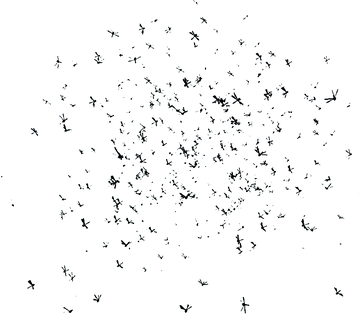
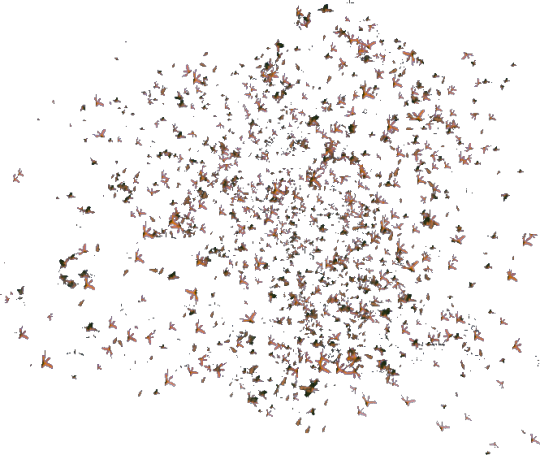
[Image IDs: Two renders, one of a swarm of Deeptora Bough Wasps, followed by a swarm of Deeptora Honeycomb Bees /End IDs.]
I just started playing Deep Rock Galactic fairly recently, and I'm a big fan! There's a lot in the game for bug fans to enjoy, with the vast majority of wildlife within the rock and stone being bugs, although the bugs are all aliens and aren't very easily comparable to the real thing. Even still, as tends to be the case, we can still allegedly find our Hymenopteran friends amongst this collection of extraterrestrial exoskeletal animals! But how do these bugs from the Hollow Bough and Sandblasted Corridors compare to those of our world?
First off their appearance, and, I'll be honest, there's not a lot here to analyze on the bugs themselves visually. Understandably when there are hundreds of bugs attacking at once, the developers wanted to make these guys more like particles than individual 3D models. Regardless, we can still take in a few details from their silhouettes, in which we can see, in a design choice surprisingly similar to the Mask Hornets from Lethal Company, the Deeptora Bough Wasps are actually more dragonfly-like than any social wasp, with the only wasp I can think of to really compare them to being ichneumon wasps.


[Image Sources: jupiterswasphouse, ie myself, and The Pathless Wood | Image IDs: A photo of a great blue skimmer dragonfly perching on a rusted dark metal garden decoration, followed by an image of a relatively large male ichneumon wasp on a green leaf /End IDs.]
Luckily, they at least appear to have the right number of wings, with a pair of forewings and a pair of hindwings, although there doesn't seem to be any real indication of legs. As for the Bees, meanwhile, are less clear, although they have a similar shape, also don't have any visible legs, they have a slightly wider gaster, and the presence of proper hindwings is unclear.
However, just because the actual insects don't provide us with much visually, doesn't mean that they don't give us a little bit more to go off of in general, as they still, of course, have nests!


[Image IDs: Two renders of the nests, the former belonging to the Deeptora Bough Wasps while the latter belongs to the Deeptora Honeycomb Bees /End IDs.]
... and clearly, these are very alien structures, with the bees' nest not being too easily comparable to the arboreal slabs of wax made by the true honey bees of our world we typically think of, genus Apis. However, it may be easier to compare them to some of the nests of honey bees of a different genus, that being Trigona!
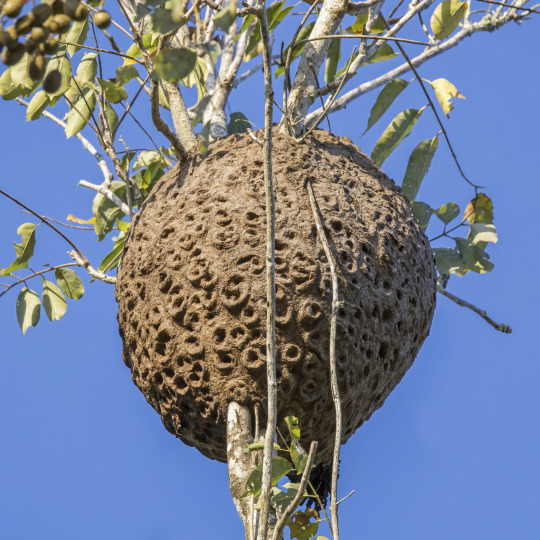
[Image Source: Wikimedia Commons, Sharp Photography | Image ID: A photo of a Trigona bee nest in a tree, the structure being very round with a multitude of holes /End ID.]
Obviously, it's not one-to-one! But, with its more enclosed shape and entry holes, it's a lot closer than those of genus Apis. We'll be returning to Trigona for other reasons later, but in the meantime, we'll move on to the Deeptora Bough Wasp Nest. Now, this nest is perhaps easiest to compare to paper nest making Vespids such as paper wasps, hornets, and yellowjackets. Although it seems to combine elements of the open, umbrella-shaped structures built by the paper wasps and the enclosed structures built by the hornets and yellowjackets.


[Image Sources: Flickr, Bob Peterson, and ResearchGate, Tshering Nidup | Image IDs: A real world photo of a nest of paper wasps, species Polistes major, subspecies major, followed by a photo of a Vespa mandarinia nest on the underside of a roof /End IDs.]
Although, again, it appears very alien, with a sort of red, angular, and glowing structure within the more paper-nest-like outer side of it. As previously mentioned in the It Takes Two Wasp Colony review, there are paper wasp nests that glow under UV, but these glow green, as opposed to red, and I'm uncertain how much ultraviolet light is found in the caves and mineshafts of Hoxxes IV.
Speaking of those caves, it's also worth noting that these nests are all found underground, which is not true of honey bees, nor paper wasps or hornets, this can be the case in some yellowjackets, which will build nests in holes relatively deep under the ground.

[Image Source: SMCMVCD | Image ID: An illustration of a yellowjacket nest that's been built underground, with a tunnel leading to the nest, a round structure made of paper /End ID.]
Furthermore, with regards to the number of insects within these colonies, it is stated in the bestiary that the Deeptora Honeycomb nest contains "10 million" drones, which is a strangely large number. For one, I'm not sure how that many bees fit inside these small structures, as even large nests in the real world contain "only" up to 80 thousand bees. Perhaps the tunnels extend further underground than they appear, but in game you don't seem to see the extensive tunnels below the nests that they would need to house them. Secondly, bee drones are, in fact, the males, meaning these ones would be incapable of stinging, not leaving the hive often. So how numerous, then, are the swarming workers? The log on the wasps is less specific, stating that they are actually more numerous, which seems to be inaccurate to their real world counterpart, although it's difficult to find proper numbers, as it appears that beehives generally contain more individuals than even the biggest of yellowjacket nests.
But what about their attacking behavior, then? Well, they seem to have the same general defensive behaviors, swarming and stinging players when they get too close to the nest, giving chase until the nest and the swarm are destroyed. They're a bit more aggressive than the eusocial Hymenopterans of our world, with mosts colonies only really attacking when directly disturbed in one way or another, although the dangerous environment of the caves may have made them evolve a more easily spooked demeanor.
The Bough Wasps are also described as being less aggressive than the bees, which is interesting, as it tends to be the case that eusocial bees are less aggressive than eusocial Vespids.
As for their feeding behaviors, the diet of the Bough Wasps is uncertain, as it's seemingly not mentioned, but it can be assumed that these wasps feed on the nectar of some sort of plant life given the surroundings of Hollow Bough. What is mentioned, however, is the feeding behavior of the bees, specifically being described as "flesh-eating".
Now, some of you may be thinking that there's no way there's a real world equivalent, as the eusocial bees of our world feed on pollen and nectar. However! Three examples can be found in the aforementioned genus Trigona! Trigona crassipes, Trigona necrophaga, and Trigona hypogea. These bees feed on carrion in place of pollen (Although, perhaps disappointingly to some, claims they make "meat honey" are inaccurate)! It can be assumed that the bees of Sandblasted Corridors do the same, as it is stated that they are "not particularly harmful towards Dwarves", therefore, likely not feeding on living sources of meat.
All in all, they're an interesting bunch! Clearly accuracy wasn't necessarily on their minds when making these guys, understandably so given that these are, in fact, alien in nature. Can't necessarily dock ti many points for that reason, though some things could have served to be a little more accurate. If I had to give a rating, I would say-
-
Overall: 5.5/10
-
Leave your wasp review suggestion in the replies, tags, or askbox!
21 notes
·
View notes
Note
17 pls show me a monster before i die (from lack of monster seeing)
17. tell me about a monster of the week you think is neat
i need to talk about some the minor lords/unknown and el lords from kamen rider agito. i won't talk to in depth bc i don't want to spoil too much for people who haven't seen it, but i love their designs so much. here i'm just highlighting standouts but there are a lot of stellar designs.
i also want to note that each minor lord kills their victims in an unnatural way that should not be physically possible, which is how the police know an unknown is responsible, however i won't tell how bc i think it's so much more fun to just watch agito and see.
minor lords:
hydrozoa ignio from episodes 18 and 19
theos speaks through him, warning that humans should not be killing each other. it's very jarring as it's the first time one of the lords speaks in full sentences and it's done in a very eerie way and the way the scenes are filmed feel very surreal like a mirage or an illusion. a very memorable design that gives hints at rising stakes during two episodes where it feels very relevant. i won't spoil anything here but the episodes are very good.
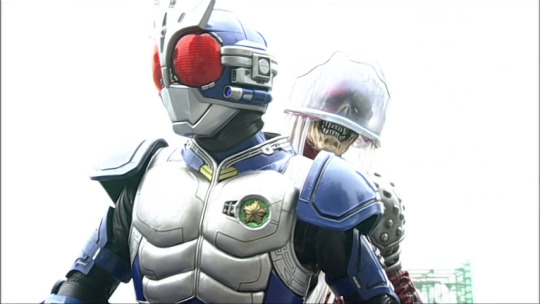
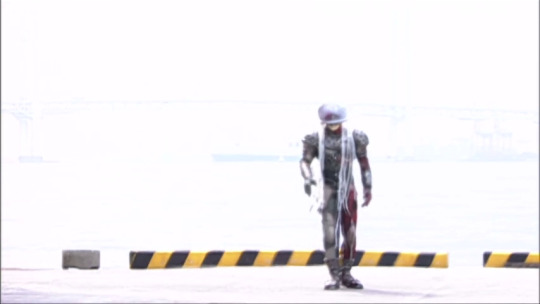
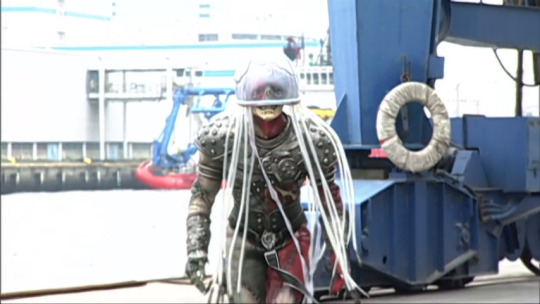
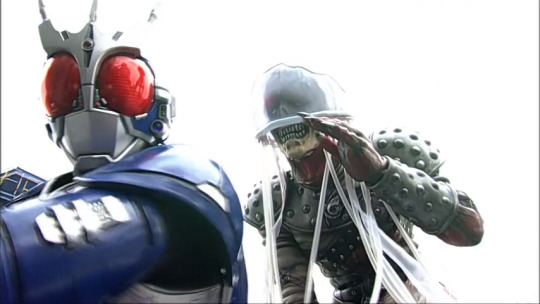
apis vespa from episode 22
though he doesn't have too much screen time he does have moving parts to him and flies. there's also some really interesting shots of the scenery and him during his final fight against agito.
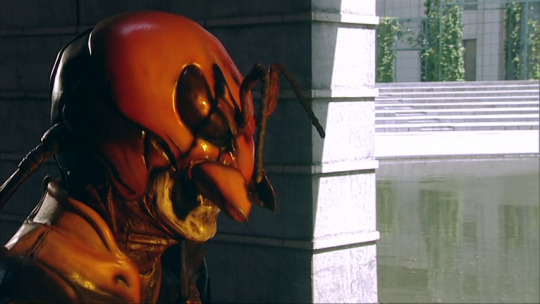
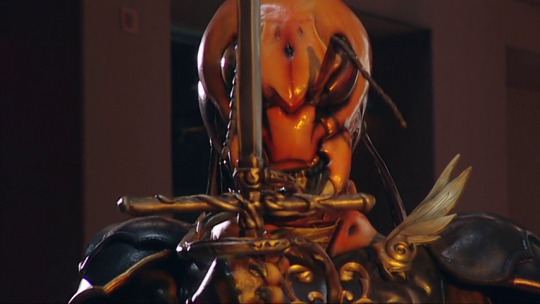
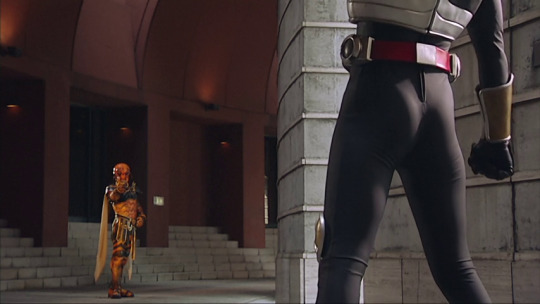
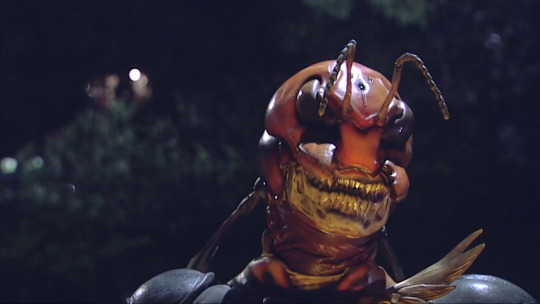
el lords:
el of the water
won't tell the episodes for the sake of not spoiling anything, but this design and character is so impactful. some scenes with some very early 2000's effects but also some iconic moments, such as when he redirected an attack to hit gills.
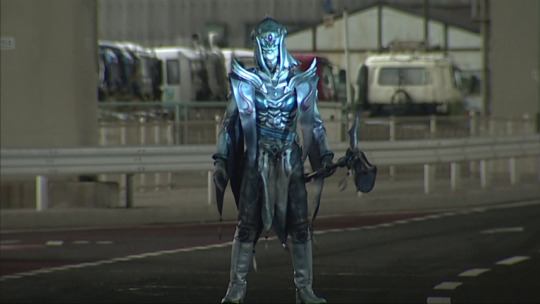
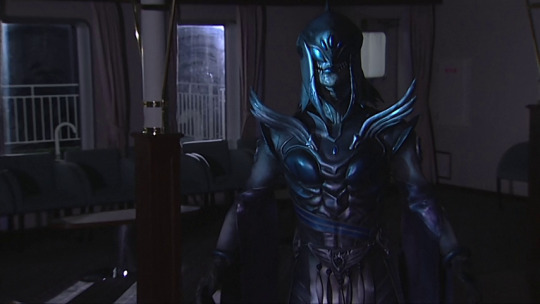
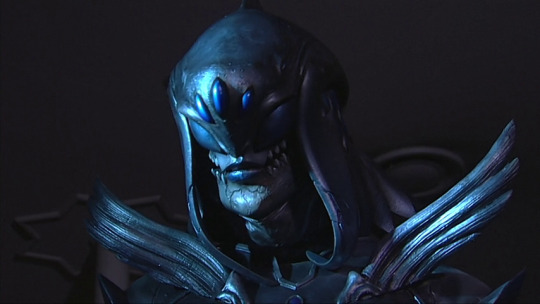
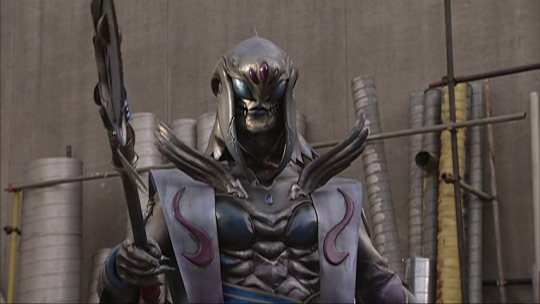
gills moments before disaster
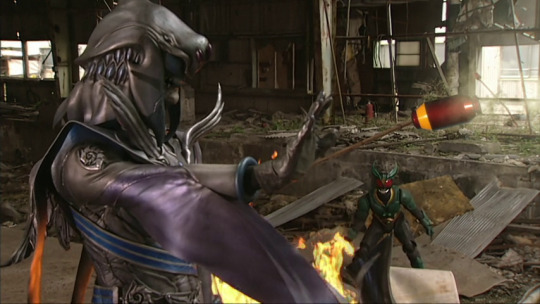
el of the wind from episodes 47-51
gorgeous bird theme with wings and hands that look like talons. also uses a longbow and arrows as her weapon. she has a very specific energy that i cannot really describe. also she grabbed kamen rider gills by his horns once and i think about it a lot.
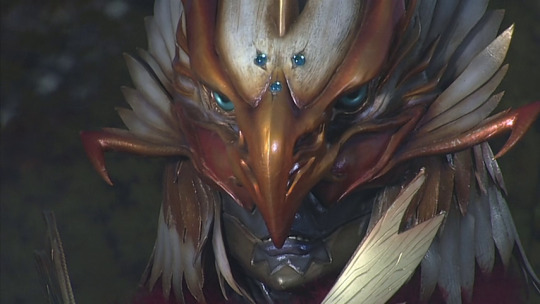
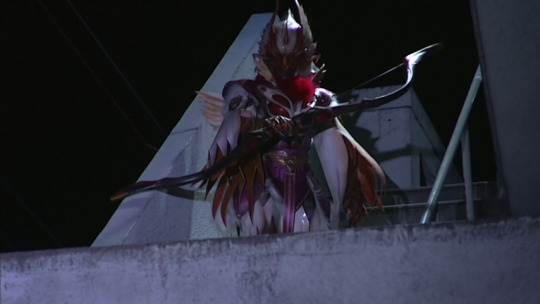
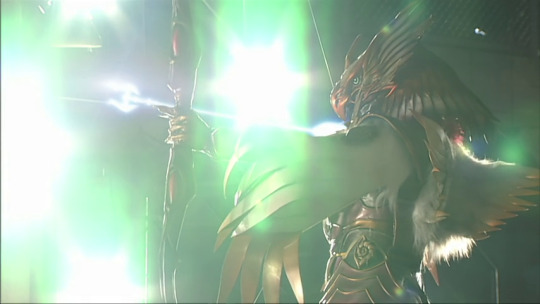
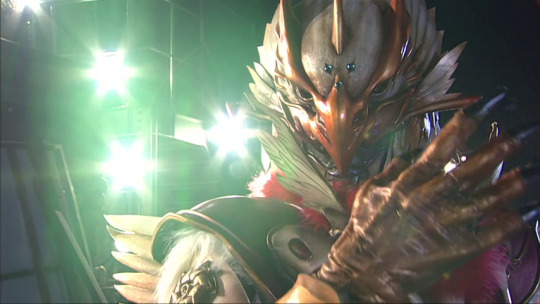
grabbing him

20 Pressing Toku Questions
5 notes
·
View notes
Text
Se trovi un riccio "morto" nei mesi più freddi, non seppellirlo, non buttarlo nel cestino...
Nessuno vuole vedere un animale morto nel proprio cortile o sulla strada, ma può essere un riccio in letargo da novembre a marzo.
Di solito scavano buche per stare al sicuro, ma abbiamo sempre meno vegetazione verde, cespugli o foreste, ed è sempre più difficile trovare un posto sicuro dove passare la notte d'inverno.
Alcuni possono venire nel tuo cortile in cerca di sicurezza e calore per andare in letargo, altri sono così stanchi della ricerca che finiscono per dormire in posti strani come strade o marciapiedi.
🦔Durante il letargo, il battito cardiaco e il lavoro generale del corpo rallentano leggermente per risparmiare energia, che può confondere una persona che il riccio è morto.
In ogni caso, se vedete un riccio fermo, assicuratevi che sia in un posto sicuro e caldo e che possa rimanere per 5 mesi.
🦔 Se trovi un riccio nel tuo cortile o da qualche parte per strada, fai un buco in una scatola di cartone e in un posto asciutto, sicuro e tranquillo così che possa trascorrere i mesi freddi lì.
🦔I ricci sono una specie in via di estinzione, completamente innocua e molto importante nel nostro ecosistema.
Mangiano insetti, lumache, rane, lucertole, serpenti, compresi quelli velenosi.
Distruggono anche i nidi di topi.
Non hanno paura delle api o delle vespe. Il riccio può facilmente distruggere un nido di vespa e mangiare i suoi abitanti senza prestare attenzione ai loro morsi.
. Gli scienziati hanno notato da tempo l'immunità dei ricci ai veleni forti, compresi i morsi di vipera.
Questo fenomeno antidoto è ancora sconosciuto agli scienziati.
,State attenti quando vedete i ricci nei mesi freddi. Aiutare un animale così fragile non costa nulla.
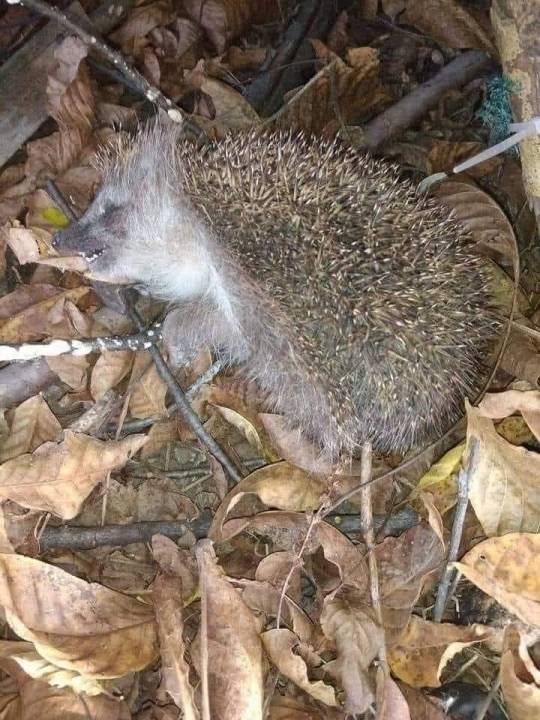
38 notes
·
View notes
Text
Run search engine experiments in Vespa from python
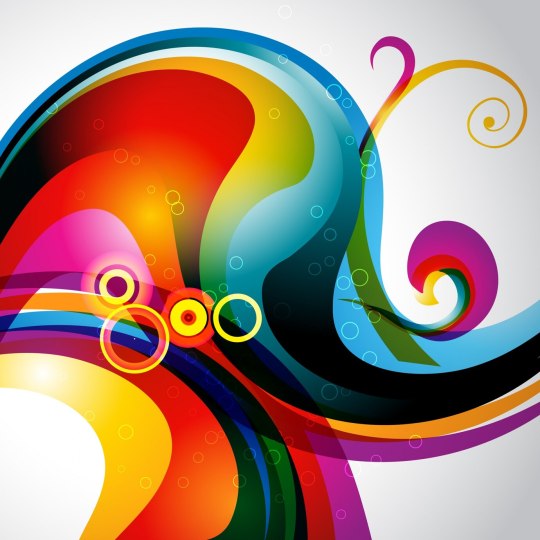
Three ways to get started with pyvespa. pyvespa provides a python API to Vespa. The library’s primary goal is to allow for faster prototyping and facilitate Machine Learning experiments for Vespa applications. UPDATE 2023-02-13: Code examples are updated to work with the latest releases of pyvespa. There are three ways you can get value out of pyvespa: You can connect to a running Vespa application. You can build and deploy a Vespa application using pyvespa API. You can deploy an application from Vespa config files stored on disk. We will review each of those methods. Photo by Kristin Hillery on […]
0 notes
Text

Halo, perkenalkan nama aku Parikesit. Lebih lengkapnya Nama panjangku Parikesit Lelatunipun. Aku dibesarkan dari keluarga yang memegang erat budaya jawa. Bapak berasal dari Purwokerto, Jawa Tengah sementara ibu lahir di Magetan, Jawa Timur. Sangat kental sekali bukan? Sejak kecil aku tumbuh dari kasih sayang orang tua yang tak pernah ada habisnya dan mereka sangat menyayangiku. Masa kecilku sangatlah bahagia. Walaupun hidup sederhana tapi aku tak pernah merasakan kehilangan kasih sayang dari orang tua ku, mereka selalu ada untukku dan mengajarkan arti sebuah kesederhanaan. Aku anak kedua dari dua bersaudara dan aku anak terakhir. Aku memiliki kakak perempuan dan jarak usia kita berbeda 5 tahun.
Oh iya pasti diantara kalian ada yang bertanya apa arti dari namaku "Lelatunipun" tentunya sebuah nama yang asing bagi kalian kan? Kalau menurut orang tuaku yang sempat aku tanya apa arti dari nama tersebut adalah Lelatunipun dalam bahasa jawa, artinya: Api-api kecil. Dengan nama itu mereka memiliki harapan agar anaknya di masa depan menjadi cahaya bagi orang-orang yang berada didekatnya, walaupun api kecil tetapi hangatnya mampu menerangi dan menghangatkan sekitarnya. Filosofi yang bagus menurutku hehe semoga saja aku bisa menjadi apa yang mereka harapkan. Aamiin.
Disini aku hanya ingin bercerita tentang perjalanan hidup aku. Makna arti dari jatuh dan bangun, merasakan patah berkali-kali dari beberapa orang yang di cintai atau mungkin saja nanti akan aku ceritakan tentang suasana politik yang aku alami di tahun-tahun itu hahaha apapun akan aku ceritakan dan aku tulis disini. Segala keresahan yang pernah ku alami atau momen-momen yang pernah terjadi dan gak sempat terrekam tentunya akan ku gambarkan lagi. Biarlah segala kenangan itu menjadi warisan atau legacy lewat tulisan ini.
Oh iya aku menulis ini tidak sendiri. Aku orang yang payah untuk menulis. Sudah pasti aku di bantu oleh teman yang mampu merangkai cerita agar terlihat lebih menarik untuk di baca dan aku ada orang yang dapat di percaya dan mampu menyusunnya. Dia adalah Mas Abi temanku, mentor, senior, abang-abangan sekaligus orang tuaku hahaha. Nama lengkapnya Septian Abimanyu tapi aku terbiasa memanggilnya mas Abi. Dia adalah temanku yang aku kenal lewat komunitas vespa. Ya betul, hobby kita sama yaitu penggemar mesin kanan. Sudah lama sekali aku mengenal dia. Kalau di pikir-pikir dia memang pantas jadi orangtua aku hahaha namanya saja Abimanyu. Di dalam kisah Mahabharata sosok pangeran Abimanyu adalah ayah Parikesit dari istrinya yang bernama Dewi Utari. Namun sayang di kisah Mahabharata itu Abimanyu terbunuh dalam peperangan. Perang baratayudha atau perang kurukshetra adalah pertempuran besar-besaran antara dua kubu yaitu Korawa yang dipimpin Duryudhana dan Pandawa yang di pimpin Yudistira. Kemudian peperangan itu berhasil dimenangkan oleh kubu Pandawa dengan diangkatnya Yudistira menjadi raja Hastinapura. Di perang itu Abimanyu gugur dan belum sempat melihat anaknya, Parikesit karena masih berada di dalam kandungan. Sedih sekali ya? Tapi akhirnya kita bertemu di kehidupan sekarang, bukan menjadi orangtua dan anak melainkan teman rasa sahabat. Kita pun sering menghabiskan waktu bersama dari mulai konvoi bareng keluar kota, bermusik atau sekedar ngopi-ngopi santai. Semua kita lakukan bersama maka dari itu aku percaya kepadanya untuk membantu aku dalam hal penulisan ini. Wassalam.
0 notes
Text
Imagine if everyone pulled together to handle bullies and other problems like this. Everyone looking out for each other.
0 notes
Text
japanesenaturalbeekeeping
A western honey bee (Apis mellifera) bravely faces down a giant hornet (Vespa mandarinia).
Follow us to learn more about Japan’s native honey bee, 𝘈𝘱𝘪𝘴 𝘤𝘦𝘳𝘢𝘯𝘢 𝘫𝘢𝘱𝘰𝘯𝘪𝘤𝘢!
0 notes
Text
New Hornet Threat: Southern Giant Hornet Arrives in Europe
Southern Giant Hornet (Vespa soror) After Malta reported the first sighting of the Red Dwarf Honey Bee (Apis florea) colony in Europe, a species native to Southeast Asia, Europe now faces another new invasive species just months later. The Southern Giant Hornet (Vespa soror) has recently been reported in northern Spain, marking its first appearance in Europe. This hornet poses a new and serious…
0 notes
Text
Hey Ilham Taufiq!
Itulah namamu, kamu ingat kenapa aku bertahan lama menjalin hubungan denganmu? Karena kamu membuatku jatuh cinta, se jatuh2nya! Ya aku jatuh cinta. Aku selalu menantikan pertemuan kita, bagaimana rasanya dada ini berdegup kencang saat melakukan pertemuan. Bagaimana setiap hari aku selalu menantikan pertemuan itu? Setiap bertemu denganmu banyak sekali hal-hal baru yang pertama kali aku lakukan. Salah satu contohnya adalah keluar di malam hari dan makan di pinggir jalan yang katamu biarkan mereka semua iri!
Atau menyusuri malam hingga pagi menggunakan kareta api? Atau bis primajasa menuju tasik? Atau mendorong vespa berdua? Atau makan di dakochan? Haha
Misalnya lagi berdiam di pinggir jalan dan berkenalan dengan tukang pecel lele, kemudian menantikan pagi hari di Manglayang? Oh ya denganmu juga pertama kalinya aku pulang malam sampai harus naik beca dan berjalan berjinjit karena takut teteh Fetty terbangun. Dimanapun tempatnya bersamamu rasanya menjadi spesial bahkan tempat sederhana sekali semacam tangga mall Jatos tempat biasa aku menunggumu itu juga sangat spesial.
Makanan yang pernah kita makan bersama juga menjadi spesial seperti halnya cumi-cumi atau bahkan kerupuk yang hanya kita makan dengan nasi saja. Minuman juga menjadi sangat spesial seperti halnya thaitea yang kamu buat sendiri, atau susu jahe yang aku minum bersamamu. Semuanya rasanya spesial
Kamu mengenalkan bahwa tempat sederhana bisa menjadi sangat indah untuk kita lalui. Kamu juga adalah laki-laki pertama yang memegang tanganku, memeluk tubuku. Pakaianmu dan sepatumu juga adalah bukti bahwa aku pertama kalinya mencuci baju orang lain selain keluargaku.
Kamu juga laki-laki pertama yang mengajaku berlari meninggalkan keluargaku. Hampir saja aku menyetujuinya dan hampir saja aku berlari memegang tanganmu dan mengijinkanmu pergi membawaku ke tempat manapun yang kamu mau!
Tapi keinginan itu berhenti. Saat aku takut, aku tidak bisa melupakam rasanya ditinggal sendirian. Aku takut tiba-tiba kamu pergi menghilang lagi begitu saja dan aku sendirian.
Hey, Ilham Taufiq!!!
Kamu adalah laki-laki yang baik hati, kamu berharga dan kamu layak dicintai kembali! Aku yakin, kamu masih bisa melakukan hal-hal baru lainnya bersama perempuan beruntung itu. Kamu bisa melakukan hal-hal menyenangkan seperti halnya denganku. Aku yakin perempuan itu akan sangat bahagia seperti halnya aku yang bahagia saat denganmu. Aku yakin kamu bisa kembali mencintai seseorang.
Namun aku harap kamu tidak akan menghilang. meninggalkan dan menyerah. Aku yakin kamu bisa belajar untuk mengungkapkan keresahanmu dengan bijaksana dan terbuka kepada seseorang itu, aku harap kamu tidak tenggelam dengan rasa sakit, aku harap kamu tidak selalu lari dari masalah yang kamu hadapi, aku harap kamu tidak sembunyi, aku harap kamu kuat. Aku harap seseorang itu bisa menjadikanmu seperti harapanku ini.. karena dulu aku tidak bisa membuatmu sekuat itu. Ternyata dulu sekuat apapun aku berusaha meyakinkan, berusaha menguatkan, memohon-mohon tapi aku tetap tidak bisa mengetuk hatimu untuk menjadi lebih kuat.
Bii.. aku ingin kamu sekarang membuang semua rasa takut, resah dan khawatirmu itu. Kamu harus merasakan rasa tulus san cinta dari seseorang di kelilingmu. Kamu harus fokus bahwa ada seseorang yang menyayangimu. Kamu harus kuat, dan jangan kau lepas lagi. Yakinkan seseorang itu bii..
Seseorang itu bukan aku, kamu tau pasti bahwa sekarang seseorang itu bukan aku. Kamu tidak perlu sakit dan khawatir lagi, karena seseorang itu bukan aku, kamu tidak perlu pergi dan menghilang lagi.
Aku harap kamu membaca tulisan ini meski aku tau kamu tidak akan mungkin membacanya.
0 notes